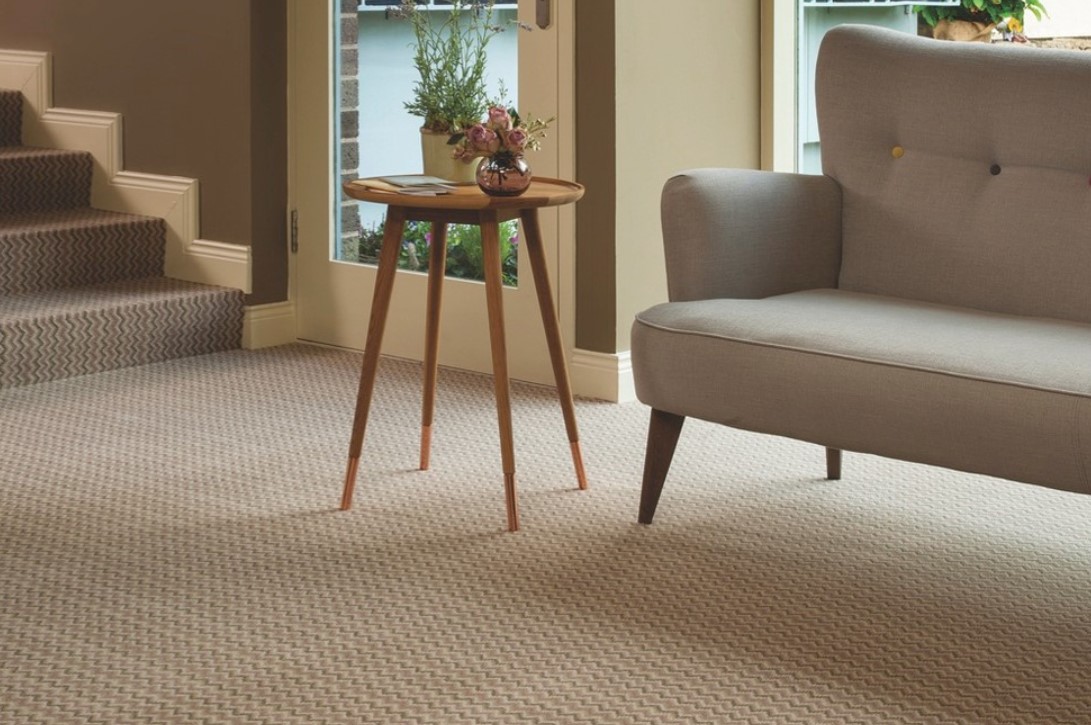
When it comes to choosing a carpet for your home, there’s such a wide variety of options on the market that it can often get overwhelming. The possibilities vary from the different types of carpets, such as Berber and plush carpets, to carpets installed from wall to wall or cut into squares. Fortunately, the technology for carpet making nowadays has improved significantly, which means that even the less expensive ones can last you a long time if you put them in the right location and maintain them properly.
Carpets typically require more maintenance than vinyl or tile, and it’s important to consider a few other factors besides the colour and design when choosing one.
Choosing the location
As a general rule of thumb, when you’re choosing a carpet, it’s important to consider where in your house you’ll be putting it. Some areas in your home receive more foot traffic and will require a carpet made of materials that can endure that.
For instance, if you want to buy a new carpet for your bedroom, there likely won’t be as much traffic as in the living room or the kitchen. Carpet cleaning experts advise to spend a bit more for a higher quality carpet for such areas and buy less expensive ones for the places that are used less frequently.
Choosing the material
When choosing the material for your new carpet, consider if you prefer a natural or synthetic one. Each one has their advantages and disadvantages, and it’s important to weigh both of them in relation to your lifestyle situation.
Wool
Wool carpeting is usually made without using chemicals and is resistant to dust mites and allergens. The advantages of choosing a carpet made of wool include the following:
- Friendly for the environmentally;
- Hides dirt well;
- Easy to clean;
- Strong and durable.
While wool carpets typically last longer than synthetic ones, they also have disadvantages, such as:
- Expensive;
- Stain easily;
- Sensitivity to bleach.
Nylon
Nylon is one of the most commonly used fibres for carpets because it’s one of the most durable. It’s a good choice if you’re looking for a carpet that can last you for decades and you want to use in high-traffic rooms. The advantages of nylon carpets include:
- Resilience;
- Elasticity;
- Ease of cleaning.
Naturally, nylon carpets also have disadvantages. These types of carpets are sensitive to bleach and fade out easily because they’re synthetic.
Polyester
Polyester carpets provide soft and luxurious underfoot and are typically resistant to stains. Their advantages include:
- Resistance to water-based stains;
- Strong resistance to fading, soil-dye and bleach.
On the other hand, because these types of carpets are synthetic, their disadvantages include:
- Vulnerability to oil-based stains;
- Harder to clean;
- Quickly matting down;
- Difficult to dye;
- More suitable for low-traffic areas;
Choosing the colour and style
Choosing the colour and style of your new carpet is entirely up to your personal preferences and tastes. Fortunately, there’s a great deal of options on the market in this aspect. In some stores, you can even request to have a carpet dyed in the colour you desire.
When going to a store to shop for a carpet, it’s recommended to bring fabric swatches with yourself, for example, of the furniture and drapes, samples from wallpapers and paint chips. This will make your choice easier as you’ll be able to assess how your new carpet will look together with the other textures, colours and patterns in your interior. However, keep in mind that the lightning in the store will most likely not be the same as the one in your house, and this can influence the way your new carpet looks when you finally bring it home.
If you’re can’t make a decision between two or more carpets, ask whether you can take a sample home so you can test it against the rest of your interior elements.
Choosing the texture
If you’re shopping in physical stores, the carpet textures you’ll commonly find will include textured, frieze, plush and Berber. These terms apply to a carpet’s pile, which is the surface you see, and you should think about which one matches your lifestyle best.
Textured
Textured carpets can be decorated with florals and highly detailed knots or less complex in appearance. Depending on the region you live in, they’ll likely vary.
These types of carpets vary in tuft height. Their two-toned appearance hides dirt well and reduces the creation of footprints and vacuum marks. It also has a long life expectancy, which makes it a good option for active lifestyles and high-traffic rooms.
Frieze
Frieze is one of the most expensive carpet textures. It has tightly twisted tufts, which give its surface a rough texture that typically hides footprints well. This carpeting is usually used in rooms that receive heavy traffic because it wears well and lasts long.
Plush
Plush carpets are typically made from tightly twisted piles, which makes them thick, soft and inviting. However, these types of fabrics also show footprints and vacuum tracks quickly, which can develop into “pooling”. These are areas that appear shaded because the normal direction of the fabrics has been reversed. These types of carpets work best in areas with low foot traffic.
Barber
Berber carpets are made of different shades, mainly in neutral colours. Recently, these types of carpets have become more popular because they give homes a more natural appearance.
These carpet textures are made from continuous loops and are flat and dense. This means that they’re very durable and don’t show tracks, dirt and stains easily, which makes them suitable for high traffic areas, such as living rooms, kitchens and entryways.
Maintaining a carpet
When choosing a carpet, it’s important to take into account how easy or difficult it would be to clean and maintain. If you have kids and pets in your household, your carpets are likely to get dirty often, especially if they are made of wool. If you don’t account for that when purchasing your carpet and choose the right material and texture, at some point, your carpet will develop unpleasant odours. That’s why when purchasing a carpet, it’s important to think about how busy your schedule is and how ready you are to perform regular maintenance.
It’s advisable to establish a carpet cleaning schedule so that you’ll maintain a hygienic and healthy environment in your home. Generally, carpets require regular vacuuming and deep cleaning at least once a year to remain in good condition. If you don’t have the time to perform these tasks, consider hiring a professional carpet cleaning service to do it for you.
Takeaway
When you start looking for a carpet, make sure you do good research and take your lifestyle into account rather than deciding based on the carpet’s appearance. Consider the occupants of your household, such as children and pets, how long you want the carpet to last you, its maintenance requirements and if you’re ready to meet them. Last but not least, consider if the room you’re placing your new carpet in has access from outside or if there’s a distance between the item and the outdoors.
